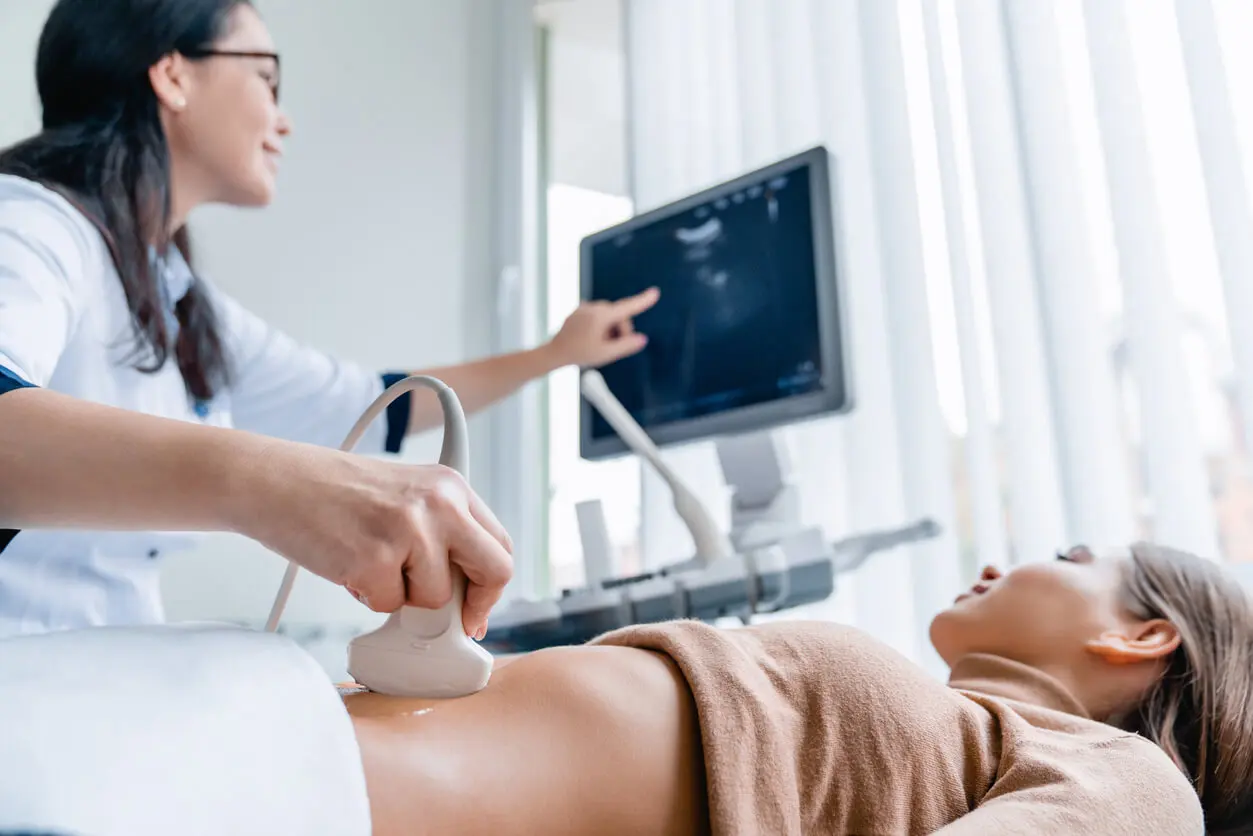Spleen Pain: Causes and Treatments

There are several factors that can cause pain in the spleen. The causes range from certain types of injury to diseases such as amyloidosis, mononucleosis, sickle cell anemia, leukemia, and hepatitis.
Moreover, in addition to pain, inflammation can occur. The treatment will depend on the cause.
And although the spleen is important since it helps filter blood and store white blood cells, it’s possible to live without it. However, in this case, a person’s immune system response will be affected.
What is the spleen and what are its functions?
The spleen is a small ovoid-shaped organ with spongy tissue. It measures about 12 centimeters and weighs about 150 grams.
It’s located in the abdominal cavity, on the left side. It can be located behind the stomach, just below the diaphragm.
The functions of the spleen are related to blood filtration:
- The spell eliminates damaged or old red blood cells that no longer function.
- It helps in the production of red blood cells, especially when there’s a problem in the bone marrow.
- It stores blood (up to 250 cubic centimeters) and supplies it in case the body needs it.
- The spleen participates in the production and storage of lymphocytes, which are white blood cells of the immune system.
- It helps identify the immune system viruses and bacteria, allowing the immune system to help eliminate them.
It’s also important to point out that there is a red pulp and a white pulp in the spleen. The first one performs the functions related to the red blood cells, while the second one takes care of the lymphocytes.
Like this article? You may also like to read: The Link Between the Lymphatic and Circulatory Systems
The main causes of pain in the spleen
Several conditions or injuries can cause pain in the spleen, causing inflammation of it and altering the fulfillment of its functions. Let’s take a look at what they are.

1. Rupture of the spleen
Despite its location in the middle of several organs, it’s possible for a rupture of the spleen to occur. However, this is not very common. The estimated incidence is about 0.1%, according to studies.
This can occur due to trauma or blows, during car accidents, sports injuries, falls and fights. A rib fracture is also causative. Even some rare cases of spontaneous rupture have been reported.
2. Enlarged spleen
An enlarged spleen may not cause symptoms. However, in some cases, it manifests itself with pain, as well as a feeling of pressure in the abdomen.
This can extend to the side and up to the shoulder. It’s often felt more when breathing deeply.
The person experiences a feeling of fullness, even if he or she has eaten little. The frequency of infections may also increase. Occasionally, there’s mucosal bleeding and bruising.
Enlargement of the spleen or splenomegaly may be due to various conditions, including:
- Syphilis
- Malaria
- Leukemia
- Lymphoma
- Thrombi
- Sarcoidosis
- Endocarditis
- Mononucleosis
- Hemolytic anemia
- Gaucher disease
- Niemann-Pick disease
3. An increase or alteration of the functions of the organ
Diseases or the consumption of certain medications can cause an alteration in the functions of the spleen. Then, the production of blood cells can be affected, causing enlargement as well as pain.
Among the main diseases associated with this process are mentioned some that also cause inflammation:
- Pernicious anemia
- Thalassemia and thrombocytopenias
- Sickle cell anemia
- Rheumatoid arthritis
- Cytomegalovirus infection
- Viral hepatitis
- Miliary tuberculosis
- Leishmaniasis
In all these cases, the demand on the immune system increases, putting pressure on the spleen and making it work harder. This affects its normal functioning.
4. Infiltration
There are diseases that cause the infiltration of cells, affecting various organs. This can cause enlargement as well as pain in the spleen.
Such diseases include amyloidosis, myeloproliferative syndrome, leukemia, various types of lymphoma, and metastatic tumors.
5. Liver disorders
The liver and spleen are closely related. Sometimes disorders of the liver, such as cirrhosis, can also cause inflammation and pain in the spleen.
We think you may be interested in reading this, too: Everything You Need to Know about Hematologic Diseases
How is the diagnosis made?
In some cases, when abnormal growth of the spleen occurs, there may be no symptoms. It may be discovered during a routine physical examination, as the physician should not be able to feel the spleen unless it is enlarged.
However, when there’s pain in the spleen or in the area where it’s located and a problem is suspected, imaging may be performed through abdominal x-rays, ultrasound, CT scans or nuclear magnetic resonance imaging.
These tests can determine the size of the spleen or whether it’s compressing other organs. They can also evaluate the blood supply.
On the other hand, blood tests help identify the cause of spleen enlargement by measuring the amounts of protein. A bone marrow examination may also be done to rule out leukemia or lymphoma.
Finally, when the organ has been surgically removed, a tissue biopsy is done to see if the cause of the hypertrophy is related to a disease.

Treatment of spleen pain
There are several reasons why spleen pain may occur. Treatment will depend on the causes.
Treatment is usually aimed at addressing the underlying condition. If it has to do with pernicious anemia, for example, vitamin B12 injections are recommended; if it has to do with lymphomas, chemotherapy or radiotherapy is applied.
It should be noted that when this organ is affected, repeated infections often occur. Because of this, antibiotics are often used in conjunction with basic treatment.
On the other hand, if the spleen ruptures and there is hemorrhage, the physician must evaluate what is the best option and avoid aggravating the situation. Blood transfusions are usually required.
In this case, as in other serious situations, emergency surgery to remove the organ, partially or completely, is usually recommended.
Total removal may be indicated when there is cancer in the spleen, abdominal trauma, or spontaneous rupture due to leukemia or abscesses.
Is it possible to live without a spleen?
Yes, it is possible to live without the organ, since it’s not a vital organ in the strictest sense of the term. However, this is not ideal, because the body is more susceptible to infection if it doesn’t have a spleen.
In cases where the spleen is missing, other organs of the body adapt to partially replace the lost functions, helping to filter red blood cells and produce antibodies.
To avoid complications, the person whose spleen has been removed should take extra precautions. This involves getting polyvalent vaccines (for pneumococcus, meningococcus, and influenza) and taking antibiotics for life.
All cited sources were thoroughly reviewed by our team to ensure their quality, reliability, currency, and validity. The bibliography of this article was considered reliable and of academic or scientific accuracy.
- Arbonés L, Capdevila J, Ruiz M, Carrion S. Rotura esplénica como complicación de una tuberculosis miliar. Revista Española de Quimioterapia. 2016; 29(2):109-110,
- Báez-García J, Martínez-Hernández M, Iriarte-Gallego G, et al. Ruptura esplénica espontánea secundaria a amiloidosis. Cir Cir. 2010; 78(6): 538-542.
- Castaño C, Pérez Martín R, Mancebo Y, Guerra T. Rotura espontánea de bazo. A propósito de un caso. SEMERGEN, Soc. Esp. Med. Rural Gen. 2007; 33(9): 485-487.
- Gobert D. Esplenomegalia. EMC – Tratado de Medicina. 2013; 17(1): 1-5.
- Guantes Del Vigo M, Hernaiz Argudo L, Insausti Jaca N, et al. Rotura esplénica atraumática: revisión. Sociedad Española de Radiología Médica. 2018. Recuperado de: https://www.piper.espacio-seram.com/index.php/seram/article/download/857/498.
- López-Tomassetti E, Delgado Plasencia L, Arteaga González I, Pallares A, Hernández Siverio N. Rotura no traumática del bazo: experiencia con 10 casos. Gastroenterología y Hepatología. 2007; 30(10): 585-591.
This text is provided for informational purposes only and does not replace consultation with a professional. If in doubt, consult your specialist.








